Quantifying fault reactivation risk in the western Gippsland Basin using geomechanical modelling
Ernest Swierczek A , Cui Zhen-dong B , Simon Holford A , Guillaume Backe C , Rosalind King D and Andy Mitchell AA Australian School of Petroleum, The University of Adelaide
B Institute of Geology and Geophysics, Chinese Academy of Sciences, Beijing
C BP, United Kingdom
D School of Earth and Environmental Sciences, The University of Adelaide
The APPEA Journal 53(1) 255-272 https://doi.org/10.1071/AJ12022
Published: 2013
Abstract
The Rosedale Fault System (RFS) bounds the northern margin of the Gippsland Basin on the Southern Australian Margin. It comprises an anastomosing system of large, Cretaceous-age normal faults that have been variably reactivated during mid Eocene-Recent inversion. A number of large oil and gas fields are located in anticlinal traps associated with the RFS, and in the future these fields may be considered as potential storage sites for captured CO2. Given the evidence for geologically recent fault reactivation along the RFS, it is thus necessary to evaluate the potential impacts of CO2 injection on fault stability. The analysis and interpretation of 3D seismic data allowed the authors to create a detailed structural model of the western section of the RFS. Petroleum geomechanical data indicates that the in-situ stress in this region is characterised by hybrid strike-slip to reverse faulting conditions where SHmax (40.5 MPa/km) > SV (21 MPa/km) ~ Shmin (20 MPa/km). The authors performed geomechanical modelling to assess the likelihood of fault reactivation assuming that both strike-slip and reverse-stress faulting regimes exist in the study area. The authors’ results indicate that the northwest to southeast and east-northeast to west-southwest trending segments of the RFS are presently at moderate and high risks of reactivation. The authors’ results highlight the importance of fault surface geometry in influencing fault reactivation potential, and show that detailed structural models of potential storage sites must be developed to aid risk assessments before injection of CO2.
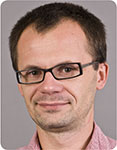
Ernest Swierczek is a PhD candidate at the Australian School of Petroleum (ASP), University of Adelaide. Ernest obtained a Master of Petroleum Geology degree from the AGH University of Science and Technology, in Cracow, in 2006, where he studied the petroleum prospectivity of the Skole Nappe in the Polish Eastern Carpathian Foredeep Basin. Before he started his research project at the ASP, Ernest worked as project geologist for Archimedes Consulting in Adelaide (2007-2010). Ernest’s PhD research interests are in seismic interpretation, 3D structural modelling of inversion structures, fault mechanics, and petroleum geomechanics. Member: AAPG, ASEG, PESA, AGU and EAGE. ernest.swierczek@adelaide.edu.au |
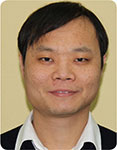
Cui Zhen-Dong is a postdoctoral researcher in the Institute of Geology and Geophysics, Chinese Academy of Sciences, focusing on the studies of geomechanics and carbon dioxide geosequestration. He received his bachelor’s degree from the Xi’an University of Science and Technology, in China, in 2005. He graduated with a PhD (2010) from the Institute of Geology and Geophysics, Chinese Academy of Sciences. cuizhendong@mail.iggcas.ac.cn |
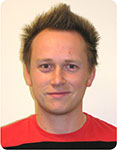
Simon Holford is a lecturer in petroleum geoscience at the ASP and is deputy director of the Centre for Tectonics, Resources and Exploration (TRaX) at the University of Adelaide. Simon graduated with a BSc (Hons) degree from Keele University (2001), and a PhD degree from the University of Birmingham (2006). He has published more than 40 papers in research areas related to the deformation, uplift and magmatic evolution of rifted margins, sedimentary basins and continental interiors, and their impact on hydrocarbon exploration. Member: AAPG, AGU, ASEG, GSA, GSL, PESA, and PESGB. simon.holford@adelaide.edu.au |
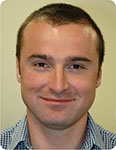
Guillaume Backe is a structural geologist for BP, working in the Integrated Subsurface Description and Modelling team in the Reservoir Development function. Aside from structural geology applied to the energy industry, his expertise lies in seismic interpretation, 3D geomodelling, and geomechanical modelling. Guillaume joined BP in January 2012 following a five-year stint as a post-doctoral researcher and, later, as a lecturer of petroleum geosciences at the University of Adelaide, where he holds an Adjunct Senior Lecturer position. Guillaume now works at BP Exploration Operating Co. Ltd, Sunbury on Thames, Middlesex, UK. Guillaume.backe@uk.bp.com |
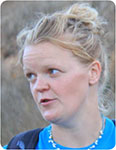
Rosalind King completed her BSc (Hons) and PhD degrees at the University of Liverpool in 2001 and 2005, respectively. Her PhD research was about the structural evolution of the Cape Fold Belt in South Africa. Rosalind worked as a postdoctoral researcher at the ASP (University of Adelaide) from 2005-2010, studying the present-day stresses of the northwest Borneo and delta-deepwater fold-thrust belts. Rosalind is a lecturer in the School of Earth and Environmental Sciences (University of Adelaide), and her research includes the tectonics of deepwater fold-thrust belts, detachments, fold and thrust mechanics, and petroleum geomechanics. Rosalind serves as the president of the SA branch of PESA. Member: GSL, AAPG and PESA. rosalind.king@adelaide.edu.au |
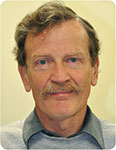
Andy Mitchell graduated with a BSc (Honours) degree in geophysics from the University of Adelaide in 1974. He worked with Esso Australia Ltd in Sydney for eight years as a petroleum geophysicist, mainly in seismic interpretation, production geology, and computer applications. Andy joined the National Centre for Petroleum Geology & Geophysics (now merged into the ASP) upon its inception at the University of Adelaide. Andy teaches courses on petroleum geology and geophysics for both geoscience and engineering students at the ASP. He is also the Postgraduate Coordinator for the ASP. Andy’s professional interests lie in seismic reservoir description, and velocity and attribute analysis. Andy presents industry short courses in petroleum geology and geophysics, and has consulted for companies in Australia and Southeast Asia. Member: SEG and EAGE. andy@asp.adelaide.edu.au |


